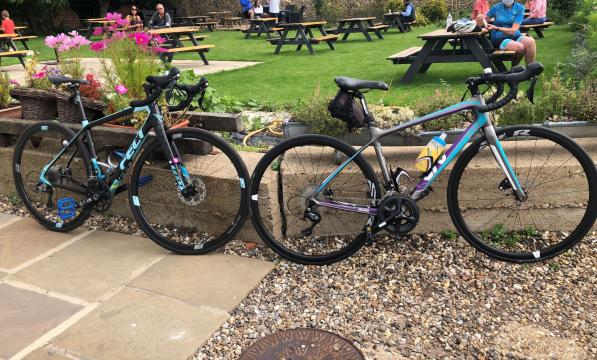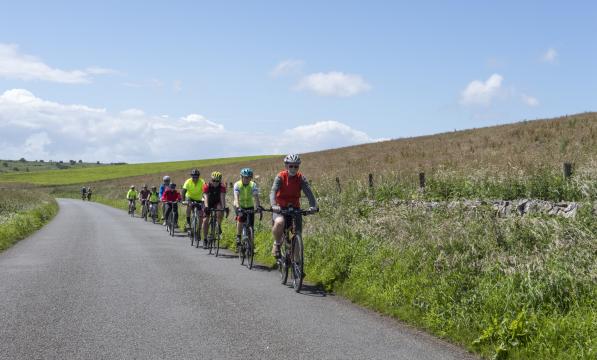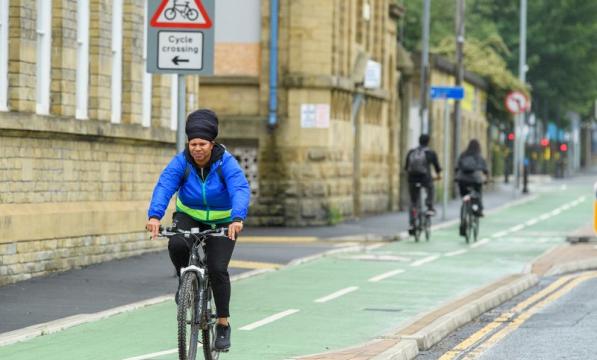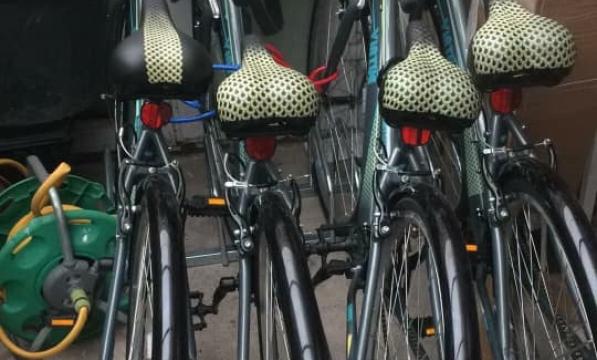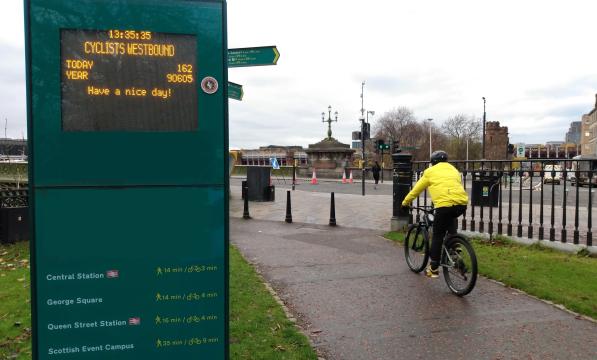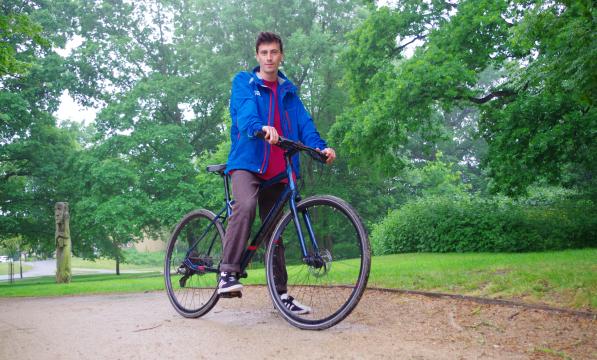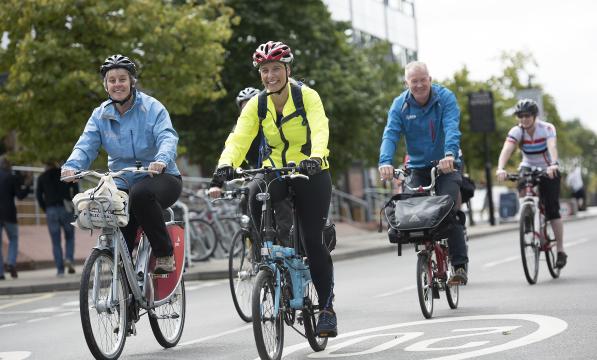How to stop your bike from being stolen

Bike security is a serious concern for cyclists and anyone who’s thinking of taking up cycling – tens of thousands of machines are stolen every year.
According to the Crime Survey for England and Wales victimisation survey, there were an estimated 288,000 incidents of bicycle theft between April 2017 and March 2018 This is a lot, but is down about 54% on 1995.
Not every bike theft incident is reported to or recorded by the police. Over the same period, the police recorded 100,000 bicycle theft crimes.
Lock it!
If you can’t park your bike behind a locked door wherever you leave it, you need a bike lock. Some locks, though, are truly awful. So make sure you get a good-quality one.
Some cable locks can be cut with nothing more than a pair of scissors. U-locks with cylindrical keys have famously been picked with a Biro pen top, forcing a mass recall by a manufacturer. And very cheap U-locks can be sawn through with a junior hacksaw in minutes.
While any lock is better than no lock, it helps to be aware of the level of protection you’re buying.
In the UK locks can be – but aren’t required to be – tested by Sold Secure, a not-for-profit company administered by the Master Locksmiths Association. It rates locks Bronze, Silver or Gold in ascending order of security. The locks should hold out for one, three and five minutes respectively against progressively more determined and tooled-up attacks.
Even without power tools, a thief with big bolt croppers or a stubby bottle jack can break open Gold-rated locks in under a minute. That doesn’t mean locks are useless. Most will stop an opportunist thief and good ones can make it hard enough work for professional thieves that they’ll look for easier pickings.
How do I lock my bike?
The key, (if you’ll excuse the pun), is to use the lock wisely. First of all: always use it. If you turn your back on your bike even for a few seconds, lock it. Lots of cyclists have just nipped into a shop only to find their bike gone on coming out. Without a lock, anyone can just walk off with your bike. If it’s locked, only lock-breakers can attempt it.
Lock it through the frame to a solid, immovable object such as a bike stand or iron railings. Make sure the object is a closed loop, so the thief can’t lift the bike over the top, and don’t use anything flimsy or the thief will cut that instead of the lock.
If you’re using a U-lock, it’s better to lock the bike low down around the bottom bracket or seat tube rather than over the top tube, where the thief can get at it easily. Fill the shackle of the lock with as much bike and street furniture as will fit, leaving as little daylight in the lock as possible. It makes the lock harder to attack. A shorter, narrower lock is harder to attack than a big one, though it is more awkward to attach in some situations.
If you’re using a flexible lock such as a cable or a chain, wrap it in such a way to keep it fairly taut. Again, this makes it harder for the thief to attack it with cable cutters or bolt croppers.
If you’ve got a Gold-standard lock with a proper (not cylindrical) key from the likes of Abus, Squire, Kryptonite or Trelock, the lock itself will be fairly pick-proof and drill-proof. Nevertheless, if you can make the locking mechanism harder to get at it’s worth doing so.
If you are not sure how to lock your bike, this poster is quite helpful:

Don’t forget to keep a spare key somewhere safe. All locks can be broken but that doesn’t mean that lock-breaking is easy.
You’ll need to oil the lock occasionally to prevent it seizing. Squirt a bit of oil into any holes and work it in by repeatedly opening and closing the lock. If your lock freezes solid in winter, pour hot water over it and oil it afterwards.
Most home and specialist cycle insurance require you to use a Sold Secure lock as part of their locking requirements, and lock it to an ‘immovable object’. Check out our official cycle insurance partner Bikmo’s handy locking requirements video and guide.
Location, location, location
Thieves don’t like an audience, so lock your bike in a public place rather than down an alleyway. Try to lock your bike somewhere covered by CCTV. Always choose a place that is well lit.
More than half of all bike thefts are from the owners’ property. At home, if you have space, keep your bikes locked inside. If you use a shed or a garage, consider using a floor or wall-mounted anchor lock for extra security. A battery-operated alarm for your shed is also a good idea to deter thieves. Buy a decent lock for your shed, one that can’t just be unscrewed with a screwdriver.
What lock should I buy?
Locks range from thin wires to thick chains that could be used to moor trawlers. The more security you want and the more you pay, the heavier the lock will be – and therefore, the harder it will be to haul around.
Thin cable locks are more properly called immobilisers, not locks. The lightest use retractable 2mm wire cables and a combination lock in a plastic body the size of a mobile phone. They’re fine for café and loo stops where you’re away from your bike for moments. They won’t stop a thief, or anyone armed with cable cutters. The Abus Combiflex is a good example of this type.
Thicker cable locks look like they offer lots more security than this. They don’t. A 7mm cable is harder to cut than a 2mm cable, but not that much, and sometimes the thickness is just extra plastic. As a lock to foil kids and to get your children into the security habit, you could do worse. Just don’t expect great protection.
U-locks (or D-locks) are probably the best compromise between portability and security for town cyclists, as they’re easily carried in brackets fixed to the frame. Opportunists won’t even attempt to attack them, so any Gold or even Silver standard U-lock is usually sufficient. For high-risk areas or more expensive bikes, consider a U-lock with a narrower and/or shorter shackle, such as the Abus Granit Futura 64 120/130 or the Kryptonite Fahgettaboudit U-lock.
If you don’t mind the weight, a motorcycle-style security chain offers the best protection. They’re also great for home use, with a ground or wall anchor. Many of these can still be bolt-cropped. Something like the Almax Immobiliser Series III.Get a long one and loop it through three or four bikes.
A useful Continental-style lock you don’t see so often in Britain is the frame- or wheel-lock, also known as a nurse’s lock. It fits permanently to a bike’s seat-stays. It works by means of a locking bar going between the spokes of the back wheel, preventing anyone riding off on the bike. Security isn’t super high, but it’s always there so you’re never without a lock. Abus does a range of frame locks.
Even if your bike is securely locked, thieves may half-inch parts from it. Anything with a quick-release skewer can be removed in moments by anyone. A bike that’s locked up in town needs more protection than this.
A quick-and-dirty solution is to bind the quick-release levers to the frame using plumber’s metal hose clamps. A better option is to use Allen bolts instead of quick releases. Better still is a set of security skewers. These have specific, individual bolt heads that require a dedicated tool to undo. The Pinhead Four Pack will keep your wheels, seat and fork safe, alternatively, the Pitlock will protect your wheels.
Saddles can also be fair game, with leather saddles by Brooks proving very popular with thieves. If you’re not keen on looping an extra cable through the stays every time you lock your wheels, then a tactic employed by some is to create a permanent anchor from saddle to frame with an old bike chain fed through an inner tube.
What else can I do?
- Identify and register your bike with schemes such as Immobilise or Bike Register
- Consider etching your postcode onto your bike frame
- You can remove the saddle and take it with you
- Take photographs of the bike, including any distinctive marks or features on it
What to do if your bike gets stolen
- If, despite your precautions, your bike does get stolen, report the theft to the police. Dial 999 if the theft is in progress
- Dial the police non-emergency number 101 or visit the local police station if it has happened. It’s unlikely the police will catch the thief red handed, but it’s a requirement of insurance policies. Don’t forget to ask for a crime reference number. This will help you trace the progress of your case
- If your cycle is stolen from a train or tube station call the British Transport Police on 0800 405 040
- Check Ebay, Gumtree and Facebook Marketplace to see if it is being sold on. You can sign up for alerts for bikes that match your stolen bike’s description. The bike may also be broken up and the parts sold on via these sites
- Share the fact your bike has been stolen on Facebook and Twitter
- Let your local bike shop know, too, in case someone brings it in for repair
Some advice on what to do if the worst happens from our friends at Bikmo
Get insured
Some household policies include bike insurance – but many don’t so be sure to check the small print. Often the maximum bike value is £300 or so, or else it doesn’t cover the bike when you’re out and about. Cycle-specific insurance does exist – Bikmo offers a great deal for Cycling UK members, and also supports environmentally focused projects.
Once you have insurance, make sure you write down lots of details about your bike and record the frame number. Take a photo of how it is normally locked up in your shed or garage. If you have it, keep the receipt for the purchase of your bike or new parts safe.
Some locks come with a several hundred pound guarantee should your bike be stolen. Again, check the small print. The requirement may be that you send the broken lock in. Thieves seldom leave broken locks.
Theft does happen but it isn’t inevitable. Most bikes that are stolen are either locked with cheap and nasty locks or else not locked at all. With a reasonable lock and a sensible attitude, you’re almost certain to keep your bike safe and secure.
Impress this on your children, especially teenagers whose bikes are prime targets for thieves. Give your teen a lock and make sure – if the bike will be unattended at any point – that he or she doesn’t leave home without it.
A small, trendy lock like the Knog Bouncer D Lock might encourage them to do this as they can be easily carried through a belt loop or similar and are relatively light.
The only failsafe solution to bike theft is to never let it out of your – or your companions’ – sight. If this is unlikely to be possible, and you are visiting a high-risk area such as an inner city, use a bike of little or no value that will not be appealing to a thief – and you won’t be heartbroken if it is taken.
Save your expensive bike to impress people on the next club ride, not to pop out to the local shops on!




